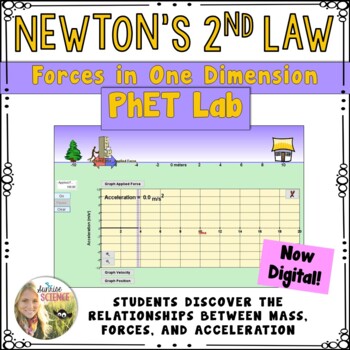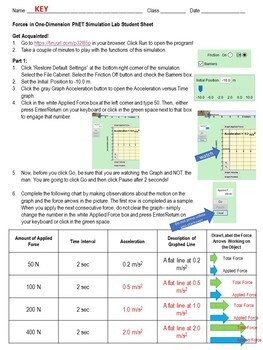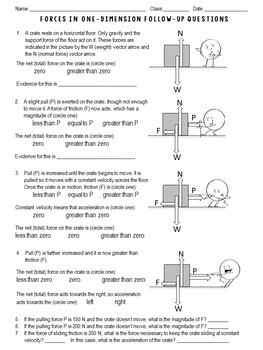Newton's Second Law PhET Lab
- PDF
- Internet Activities
Also included in
- Looking for fun and engaging ways to teach your students about motion and forces? This Motion and Forces Unit is everything you'll need to teach about speed, velocity, and acceleration, forces and Newton's Laws of Motion, gravity, and orbital motion. Your students will LOVE learning about these topiPrice $48.00Original Price $60.79Save $12.79
- This is a bundle of all of my resources for teaching physical science at the middle school level! These resources include a mix of Cornell Doodle Notes, labs, demonstrations, inquiry activities, self-paced digital 5E lessons, manipulatives, projects, pixel art review activities, and assessments. IPrice $297.00Original Price $384.06Save $87.06
- This is a bundle of all of my resources for teaching physical science at the 8th grade level WITHOUT the Cornell Doodle Notes included. I put together this bundle upon request from customers who had already purchased my Growing Bundle of Physical Science Cornell Doodle Notes or my Entire Store BundPrice $187.00Original Price $246.28Save $59.28
Description
This lesson using the Forces in One Dimension PhET virtual lab will allow students to construct their own understanding of Newton’s Second Law of Motion without necessarily being told the name of the Law itself. Students at this point in their physics unit will need to understand the concept of mass, motion with respect to a reference point, that an object in motion always changes its position and may change its direction, that the speed of an object is determined by the distance it travels in a unit of time, and that a force is a push or pull on an object.
There is also a follow-up worksheet included. Students should complete the simulation lab first and then you can assign the follow-up worksheet to evaluate their understanding of the concepts.
Now also included as a digital Google Slides version!
The virtual lab is located at this link. Please note that this simulation requires Java to run. If your students have personal laptops or tablets, I suggest checking if this simulation works on them before purchasing this resource!
Answer key is included.
You may also be interested in my Newton's Laws of Motion Cornell Doodle Notes and Powerpoint and in my Identifying Newton's Laws of Motion Abracadabra Pixel Art Digital Review!
Thanks for looking!
Sunrise Science








